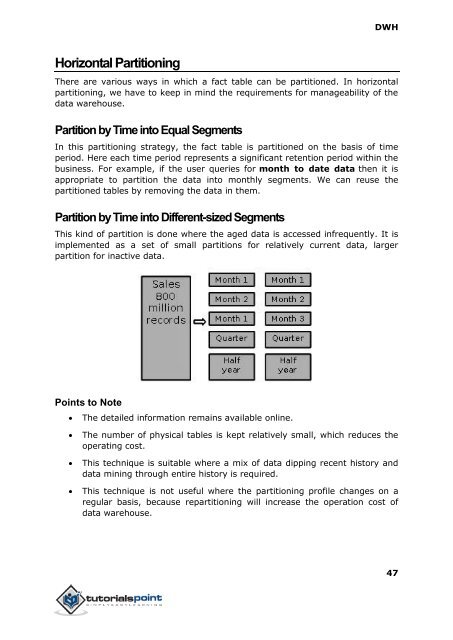dwh_tutorial
Create successful ePaper yourself
Turn your PDF publications into a flip-book with our unique Google optimized e-Paper software.
DWH<br />
Horizontal Partitioning<br />
There are various ways in which a fact table can be partitioned. In horizontal<br />
partitioning, we have to keep in mind the requirements for manageability of the<br />
data warehouse.<br />
Partition by Time into Equal Segments<br />
In this partitioning strategy, the fact table is partitioned on the basis of time<br />
period. Here each time period represents a significant retention period within the<br />
business. For example, if the user queries for month to date data then it is<br />
appropriate to partition the data into monthly segments. We can reuse the<br />
partitioned tables by removing the data in them.<br />
Partition by Time into Different-sized Segments<br />
This kind of partition is done where the aged data is accessed infrequently. It is<br />
implemented as a set of small partitions for relatively current data, larger<br />
partition for inactive data.<br />
Points to Note<br />
<br />
The detailed information remains available online.<br />
<br />
<br />
<br />
The number of physical tables is kept relatively small, which reduces the<br />
operating cost.<br />
This technique is suitable where a mix of data dipping recent history and<br />
data mining through entire history is required.<br />
This technique is not useful where the partitioning profile changes on a<br />
regular basis, because repartitioning will increase the operation cost of<br />
data warehouse.<br />
47


